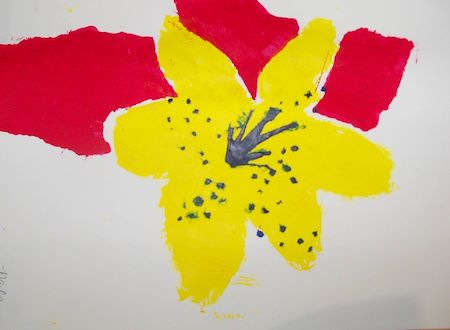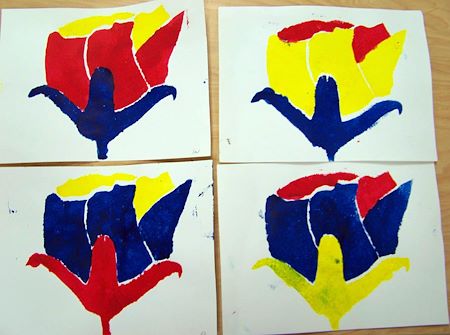Tshirt Tapestries have become great "filler" activities in my classroom. I have tubs of cut up tshirts and precut rectangles of the hook and loop canvas. When students are finished with whatever the current project is and I'm not ready for the group to move to the next project, students have the opportunity to work on a tshirt tapestry. I call them tapestries because they aren't rugs and they aren't paintings and they aren't sculptures, so tapestry it is!
How do you make your own tshirt tapestry?
1. start with a lot of tshirts and cut them into strips. I cut the entire shirt into 1/2 inch wide strips. I don't use the sewn selvages or the collar, but I use the rest of the shirt. I then cut the strip into about 4 or 5 inch long pieces. How long do you cut them? It depends on how shaggy you want your tapestry!
2. Decide on if you want to create a pattern or image. Then get to work!
3. Take a strip and gently pull it so that it rolls in on itself a little bit. Then fold in in half, run it under into a square, pull it through the other side and slip it through loop you just made and pull tight. Okay, that makes very little sense.. google latch hook rugs and follow the steps... I don't use a latch hook as I find it a lot more work.
4. Beware, this is pretty mindless work, but it is NOT fast!
Here is one about finished. It is very shaggy!
I love this one! Too bad the blue section is backwards... And they ran out of red shirts.
So close! They just needed a dozen more red strips. Sorry guys!
And don't you love the back of this! The art 1 guys who worked on this created it as they went. I love their problem solving and concept. Yes, the flag is backwards and they ran out of red, but the overall job is really nice. I will be using this in the future as a sample of great technique and good design, but lack of execution in the flipping of the design and running out of supplies.
This final tapestry is way, way to shaggy and the canvas showing through tells me that they didn't work consistently on their lines. You can skip a row, as long as you embed the skipped squares between solid rows of tshirt. This one is not consistent.
So, if you are looking to get rid of old tshirts, this is a great project for that! And, it is also a really nice differentiation project. The project below, while I started it with my daughter at home, I took it to school and had a couple of art 1 students work along a life-skills student. He threaded the strips through the hook base and the other students completed the loop. The students did a great job working together and the non-verbal life skills student was able to complete an on-level art 1 project with his regular ed peers!




















































